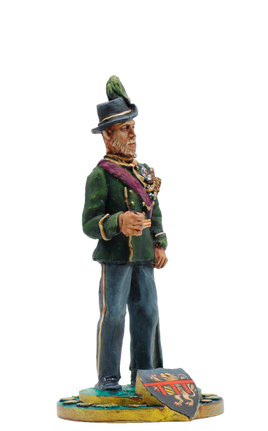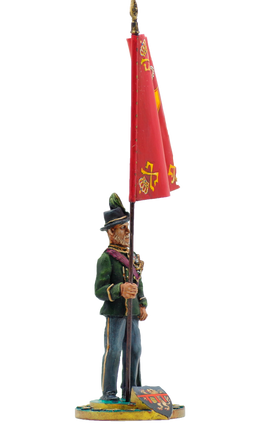
Albert
Prince of Belgium
Albert (8 April 1875 – 17 February 1934) was King of the Belgians from 23 December 1909 until his death in 1934. Albert was born in Brussels as the fifth child and second son of Prince Philippe, Count of Flanders, and Princess Marie of Hohenzollern-Sigmaringen, Albert succeeded his uncle Leopold II to the Belgian throne in 1909. He married Elisabeth of Bavaria, with whom he had three children. Albert ruled during an eventful period in the history of Belgium, which included the period of World War I (1914–1918), when most of Belgium was occupied by German forces. Other crucial events of his reign included the adoption of the Treaty of Versailles in June 1919, the ruling of the Belgian Congo as an overseas possession of Belgium along with the League of Nations mandate of Ruanda-Urundi, the reconstruction of Belgium following the war, and the first five years of the Great Depression (1929–1934). Albert died in a mountaineering accident in eastern Belgium in 1934, at the age of 58, and he was succeeded by his son Leopold III (r. 1934–1951). He is popularly referred to as the Knight King (Dutch: Koning-Ridder, French: Roi-Chevalier) or Soldier King (Dutch: Koning-Soldaat, French: Roi-Soldat) in Belgium in reference to his role during World War I. Albert Léopold Clément Marie Meinrad was born 8 April 1875 in Brussels, the fifth child and second son of Prince Philippe, Count of Flanders, and his wife, Princess Marie of Hohenzollern-Sigmaringen. Prince Philippe was

the third (second surviving) son of Leopold I (r. 1831–1865), the first King of the Belgians, and his wife, Louise-Marie of France, and the younger brother of King Leopold II of Belgium (r. 1865–1909). Princess Marie was a relative of Kaiser Wilhelm II of Germany (r. 1888–1918), and a member of the non-reigning, Catholic branch of the Hohenzollern family. Albert grew up in the Palace of the Count of Flanders, initially as third in the line of succession to the Belgian throne as his reigning uncle Leopold II's son had already died. When, however, Albert's older brother, Prince Baudouin of Belgium, who had been subsequently prepared for the throne, also died young, Albert, at the age of 16, unexpectedly became second in line (after his father) to the Belgian Crown. Retiring and studious, Albert prepared himself strenuously for the task of kingship. In his youth, Albert was seriously concerned with the situation of the working classes in Belgium, and personally travelled around working-class districts incognito, to observe the living conditions of the people.

The Garde Civique or Burgerwacht (French and Dutch; "Civic Guard") was a Belgian paramilitary militia which existed between 1830 and 1920. Created in October 1830 shortly after the Belgian Revolution, the Guard amalgamated the various militia groups which had been created by the middle classes to protect property during the political uncertainty. Its role was as a quasi-military "gendarmerie", with the primary role of maintaining social order within Belgium. Increasingly anachronistic, it was demobilised in 1914 and officially disbanded in 1920, following a disappointing performance during the German invasion of Belgium in World War I. The Garde was organized at a local level, originally in all communes with more than 30,000 inhabitants. Subsequently this "constitutional force" was limited to those towns having a population of 10,000 or more. More thinly populated communities did not have this obligation unless subject to special legislation. It was composed of citizens aged between 21 and 50 who did not already have military obligations as serving soldiers or reservists. Those aged between 21 and 32 were required to undertake training ten times annually, while the second class (aged 33–50) were obliged only to register their addresses at regular intervals. A third class was composed of older volunteers, who were not equipped, uniformed or armed and were expected only to provide support functions in their local regions. The Garde Civique was, in peacetime, the responsibility of the Ministry of the
Interior rather than the Ministry of War. It was distinct from the Belgian Gendarmerie (Rijkswacht) which formed part of the military. Most of the Garde units were infantry but there were some artillery and mounted detachments. On the eve of World War I the Garde Civique included 33 companies of chasseurs-à-pied (light infantry), 17 batteries of artillery, 4 squadrons of chasseurs-à-cheval (light horse) and 3 companies of sapeurs-pompiers (armed firemen). About half of these special corps were concentrated in the urban areas of Brussels, Antwerp, Ghent and Liège, reflecting the historic role of the Garde as a force to maintain civil order.

The House of Saxe-Coburg and Gotha (German: Haus Sachsen-Coburg und Gotha) is a European royal house. It takes its name from its oldest domain, the Ernestine duchy of Saxe-Coburg and Gotha, and its members later sat on the thrones of Belgium, Bulgaria, Portugal, and the United Kingdom and its dominions. The Belgian line was founded by Leopold, youngest son of Francis, Duke of Saxe-Coburg-Saalfeld. Following Leopold's conversion to Catholicism to take the newly-created Belgian throne, this line of the house is Catholic. Because of the First World War, the title of the family was unofficially changed in 1920 or 1921 to "of Belgium", and the armorial bearings of Saxony were removed from the Belgian royal coat of arms. Since the 2017 Carnet Mondain, the title "Saxe-Cobourg-Gotha" is again in use for all the descendants of Leopold I, with the exception of King Philippe, his wife, his sister and his brother who keep their title "of Belgium"; therefore the descendants of Astrid of Belgium do not bear this title, but that of "of Austria-Este" of their father. The armorial bearing of Saxony was put back in 2019.

Royal standard of the King. Each royal standard for a monarch is a square rouge ponceau banner of the royal arms, personalised with the king's cypher in each corner.
Awards: Sash and star of the Order of Leopold (Ordre de Léopold), Star of the Royal Military Order of the Tower and Sword (Real Ordem Militar da Torre e Espada).










